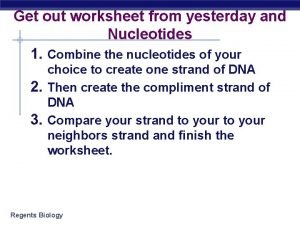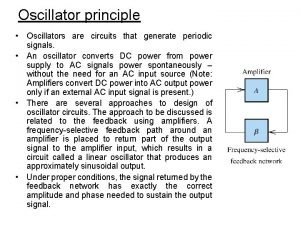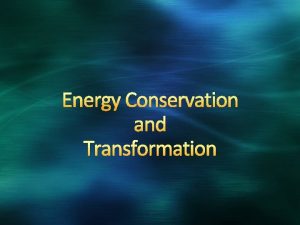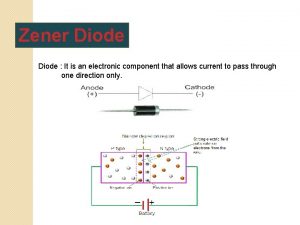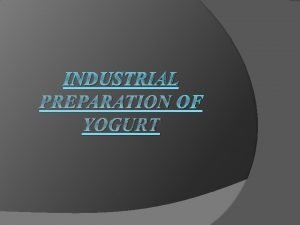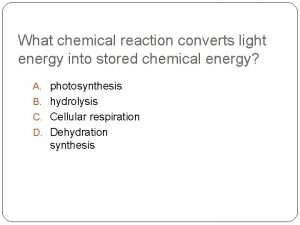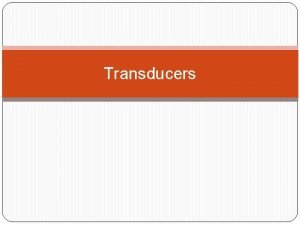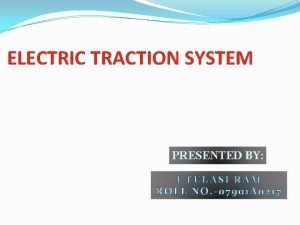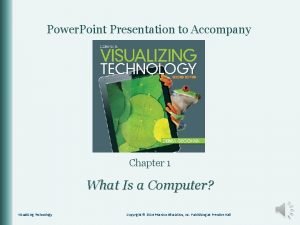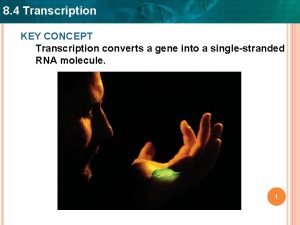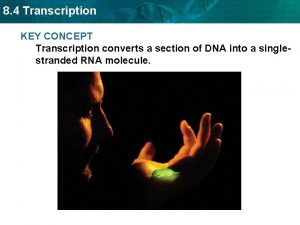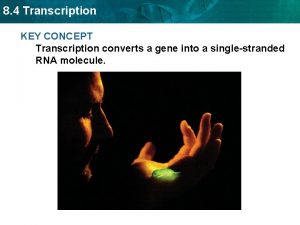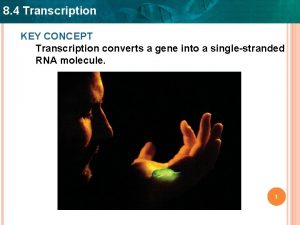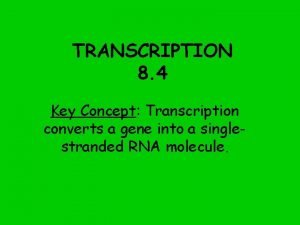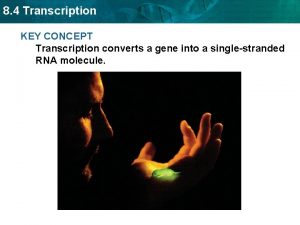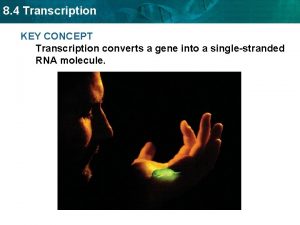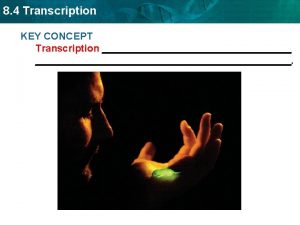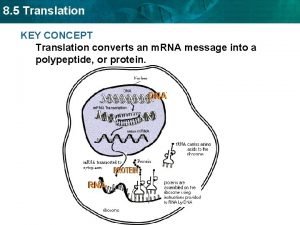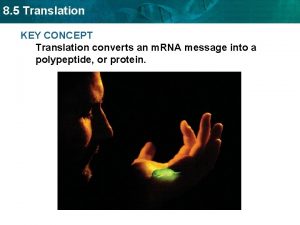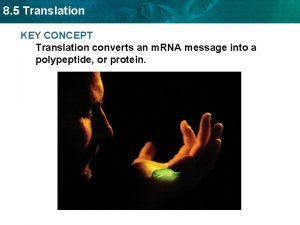8 4 Transcription KEY CONCEPT Transcription converts a















- Slides: 15

8. 4 Transcription KEY CONCEPT Transcription converts a gene into a single-stranded RNA molecule.

8. 4 Transcription RNA carries DNA’s instructions. • The central dogma states that information flows in one direction from DNA to RNA to proteins.

8. 4 Transcription makes three types of RNA. • Transcription copies DNA to make a strand of RNA. • OBJECT: to make an accurate copy of a small section of a genome (GENE) • Transcription results in 3 types of RNA: – Messenger RNA (m. RNA) carries the message that will be translated to form a protein. – Ribosomal RNA (r. RNA) forms part of ribosomes where proteins are made. – Transfer RNA (t. RNA) brings amino acids from the cytoplasm to a ribosome.

8. 4 Transcription INITIATION 2 Strands of DNA 3’ 5’ 5’ 3’ Q: Which strand of DNA provides the template for the m. RNA? Ø 3’-5’ strand sense or template strand results in a 5’ 3’ m. RNA copy

8. 4 Transcription

8. 4 Transcription INITIATION • Promoter sequences ID’s the correct strand location. – The “TATA” box – Binding site of RNA Polymerase • 2 promoter sequences signal a gene – Different sequences! • Gene starts at the end of promoter #2 • A transcription factor is added to the end of the promoter

8. 4 Transcription Elongation • Transcription is catalyzed by RNA polymerase. – RNA polymerase and other proteins form a transcription complex. – The transcription complex recognizes the start of a gene and unwinds a segment of it. start site transcription complex nucleotides

8. 4 Transcription Elongation – Nucleotides pair with one strand of the DNA. (U replaces T) – RNA polymerase bonds the nucleotides together in 5’ to 3’ direction – The DNA helix winds again as the gene is transcribed. – No Okazaki’s … No proofreading DNA RNA polymerase moves along the DNA

8. 4 Transcription Termination • RNA Polymerase hits a terminator sequence • Similar concept as promoter (2 seq’s in order) • m. RNA separates from RNA polymerase which detaches from DNA m. RNA

8. 4 Transcription

8. 4 Transcription In prokaryotes (bacteria) … translation happens right after In eukaryotes ‘processing’ of m. RNA is needed before the translation in a polypeptide chain ØIntrons must be removed

8. 4 Transcription m. RNA Splicing

8. 4 Transcription Processing Ø“ 5’ Cap” & “Poly-A” tail added to m. RNA • Addition of 5’ cap At beginning of pre-m. RNA transcript 7 guanine bases added • Addition of poly(A) tail Added to 3’ end by poly-A polymerase Protects m. RNA from attack by RNA-digesting enzymes in cytosol

8. 4 Transcription Intron Splicing Ø Spliceosomes (sn. RP’s) remove introns from m. RNA transcript

8. 4 Transcription The transcription process is similar to replication. • Transcription and replication both involve complex enzymes and complementary base pairing. • The two processes have different end results. – Replication copies all the DNA; transcription copies one gene growing RNA strands a gene. – Replication makes one copy; DNA transcription can make many copies.
 Rna matching
Rna matching Minerals concept map
Minerals concept map Lesson 1 introduction to waves
Lesson 1 introduction to waves An oscillator converts ……………..
An oscillator converts …………….. A hairdryer converts ____ energy into ____ energy.
A hairdryer converts ____ energy into ____ energy. Learning outcomes generator
Learning outcomes generator Pn junction diode, converts
Pn junction diode, converts Lactobacillus bulgaricus converts lactose to *
Lactobacillus bulgaricus converts lactose to * ________ converts light energy into chemical energy. *
________ converts light energy into chemical energy. * Introduction to transducers
Introduction to transducers Pn junction diode, converts
Pn junction diode, converts Line regulation
Line regulation Pn junction diode, converts
Pn junction diode, converts State various types of track electrification system
State various types of track electrification system Tabel kebenaran decoder
Tabel kebenaran decoder A computer is a programmable machine that converts raw
A computer is a programmable machine that converts raw
